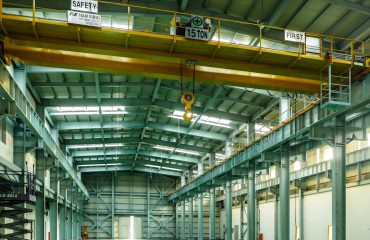In today’s globalized economy, efficient logistics are the lifeblood of successful businesses. The seamless integration of maritime and land transportation is crucial for delivering goods on time and within budget. This comprehensive guide explores key strategies for optimizing your supply chain by effectively managing both maritime and land logistics.
1. Optimizing Port Operations for Efficient Maritime Logistics
Port operations are the critical link between maritime and land transportation. Delays at ports can significantly impact the entire supply chain. Optimization strategies include:
- Improved Port Infrastructure: Investing in modern infrastructure, including advanced technology like automated cranes and improved container handling systems, can significantly reduce processing times.
- Efficient Customs and Border Control: Streamlining customs procedures and leveraging technology like electronic data interchange (EDI) can expedite the clearance of goods.
- Strategic Port Selection: Choosing ports with efficient operations, good connectivity to land transportation networks, and minimal congestion is crucial for minimizing delays.
- Real-time Visibility and Tracking: Utilizing GPS tracking and other technologies to monitor cargo movement in real-time provides valuable insights and allows for proactive problem-solving.
- Collaboration with Stakeholders: Effective communication and coordination between port authorities, shipping lines, freight forwarders, and other stakeholders are essential for smooth operations.
2. Integrating Land Transportation for Seamless Cargo Movement
Once cargo arrives at the port, efficient land transportation is critical for timely delivery. This involves selecting the appropriate mode of transport (trucking, rail, or a combination) and optimizing routes and schedules. Key considerations include:
- Mode Selection: Trucking offers flexibility for door-to-door delivery, while rail is cost-effective for long distances and high volumes. The optimal choice depends on factors like distance, volume, and delivery time requirements.
- Route Optimization: Utilizing route planning software and considering factors like traffic congestion, road conditions, and fuel costs can significantly reduce transportation time and costs.
- Intermodal Transportation: Combining different modes of transport (e.g., sea freight followed by rail and trucking) can optimize efficiency and cost-effectiveness for long-distance shipments.
- Fleet Management: Implementing robust fleet management systems, including vehicle maintenance schedules and driver tracking, ensures operational efficiency and reduces downtime.
- Logistics Partnerships: Collaborating with reliable trucking companies, rail operators, and other land transportation providers is crucial for ensuring timely and reliable delivery.
3. Strategic Warehousing and Inventory Management
Effective warehousing and inventory management are essential for managing the flow of goods throughout the supply chain. Strategies include:
- Strategic Warehouse Location: Choosing warehouse locations that offer proximity to major transportation hubs and target markets can significantly reduce transportation costs and delivery times.
- Warehouse Management Systems (WMS): Implementing WMS software provides real-time visibility into inventory levels, optimizes storage space, and streamlines warehouse operations.
- Inventory Optimization Techniques: Utilizing techniques like Just-in-Time (JIT) inventory management can minimize storage costs and reduce the risk of obsolescence.
- Demand Forecasting: Accurate demand forecasting helps businesses anticipate inventory needs and avoid stockouts or overstocking.
- Efficient Order Fulfillment Processes: Streamlining order picking, packing, and shipping processes ensures timely and accurate order fulfillment.
4. Leveraging Technology for Enhanced Visibility and Control
Technology plays a crucial role in optimizing both maritime and land logistics. Key technologies include:
- GPS Tracking: Real-time tracking of shipments provides valuable insights into their location and status, enabling proactive management of potential delays.
- Blockchain Technology: Enhancing transparency and security in supply chains by providing immutable records of transactions and cargo movements.
- Internet of Things (IoT): Monitoring environmental conditions (temperature, humidity) during transport and storage to ensure product quality.
- Artificial Intelligence (AI): Optimizing routes, predicting delays, and improving decision-making throughout the supply chain.
- Data Analytics: Analyzing data from various sources to identify areas for improvement and optimize logistics processes.
5. Last-Mile Delivery Optimization: The Final Frontier
Last-mile delivery represents a significant challenge in logistics. Optimizing this final leg of the journey is crucial for customer satisfaction. Strategies include:
- Route Optimization Software: Utilizing software to plan efficient delivery routes, considering factors like traffic and delivery windows.
- Delivery Partner Selection: Choosing reliable and efficient delivery partners with a strong track record.
- Delivery Time Window Management: Offering customers flexible delivery options and providing accurate delivery time estimates.
- Crowdsourced Delivery: Utilizing platforms that connect businesses with independent delivery drivers for increased flexibility and efficiency.
- Sustainable Last-Mile Solutions: Considering eco-friendly transportation options, such as electric vehicles or cargo bikes, to reduce environmental impact.
By strategically integrating these maritime and land logistics strategies, businesses can significantly enhance their supply chain efficiency, reduce costs, and improve customer satisfaction. The key is to adopt a holistic approach, leveraging technology and fostering strong partnerships throughout the supply chain.




